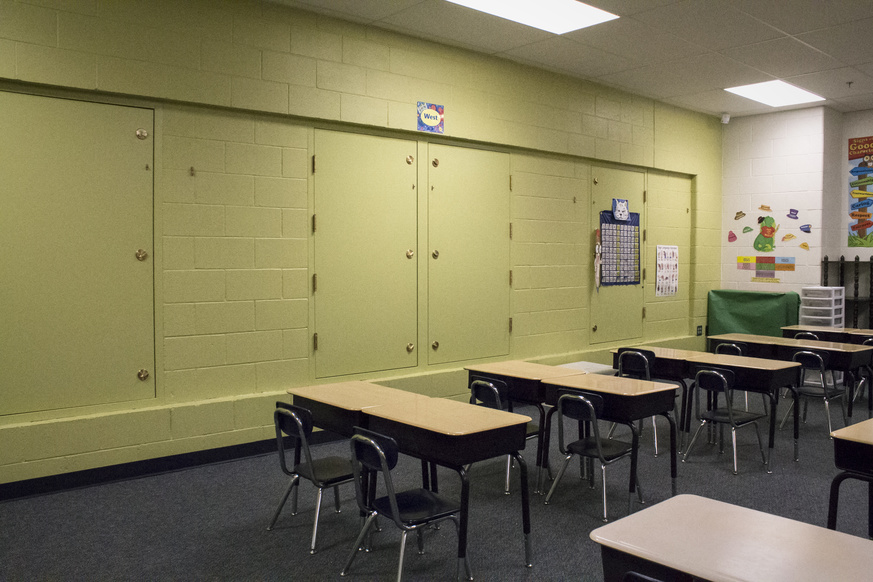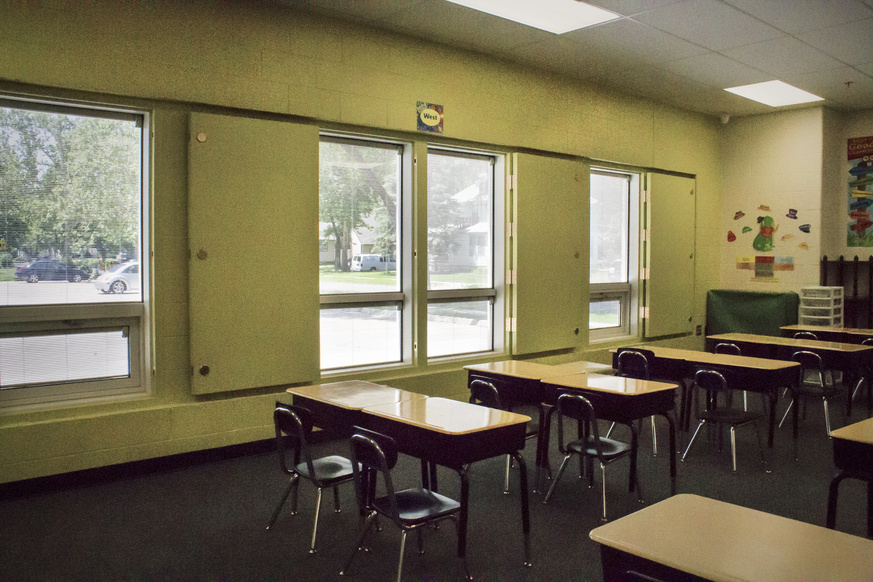Posted on June 10, 2016
When designing or renovating schools, architects, administrators, and the supporting community have a numerous considerations to balance. Establishing positive learning environments is, of course, at the top of that list. Yet issues of safety and security have also risen in importance as violent crimes, such as the Sandy Hook Elementary School shooting, undeniably highlight the need for enhancing school security. According to the National Center for Education Statistics, 65 percent of public schools reported at least one violent incident during the 2013-14 school year.1
The challenge when addressing these concerns is to balance security with educational goals and budget constraints. Successful school operation requires a secure environment that also promotes learning.
“As a design professional, it’s an exciting challenge to look into,” Clint Hibbs, one of BG’s architects, says. “But we have children, too, and we want their safety. When students and teachers are at school, if they’re not thinking about safety, then they can focus on the subject being taught. And that’s really important to us at the end of the day.”
Regardless of a school’s budget constraints, Hibbs explains that there are practical solutions to enhancing security at various levels. Even the smallest security improvement can make a big difference. BG’s architecture team often recommends three basic changes schools can make to improve their security, based on strategies of Crime Prevention through Environmental Design (CPTED): perimeter protection, access control, and classroom security.
Perimeter Protection
The appearance of a secure environment has been shown to deter violent incidents. Clear delineations of space make it easier to identify intruders. Adding a fence around the perimeter of a school campus, for example, can effectively heighten security, define boundaries, and channel pedestrian and traffic flow. Fences can also be easily balanced with aesthetics to create a pleasant environment for students and teachers.
Access Control
Limiting non-supervised entry locations minimizes opportunities for crime. All access points to schools should be controlled through designated, supervised, or locked entry points, including windows and service access. In addition, BG recommends limiting visitor access to a single point of entry. A secure front entrance coupled a check-in policy for all visitors can greatly enhance access control.
In schools where a vestibule exists, door hardware that electronically unlocks doors gives office staff the opportunity to verify a visitor’s entrance into the building. Some schools install security film on door and window glass within existing facilities to prevent glass from separating from the frame if it is broken. Another option would be to incorporate a camera monitoring system at the main entrance, which would require “buzz-in” control by office staff.
Classroom Security
In the event that unauthorized individual gains access to a school facility, effective classroom security would create a barrier between students and intruders will ill intent. Intruder function locks on classroom doors, for example, would enable a teacher to discreetly lock exterior or hallway doors from within the classroom while an interior lever or exit device provides safe egress in compliance with building code and life safety requirements.
Storm Safety
In addition to security against violence, schools in this region must also be concerned with safety during tornadoes and other storm events. Despite being in “Tornado Alley,” many Kansas schools make do with substandard refuge areas, such as existing hallways, to shelter students and faculty during tornados or high-wind events. Today, a common remedy to this situation is to design safe rooms, sometimes referred to as high-wind rooms, within school facilities.
Safe rooms can be added to existing facilities, stand alone, or be consolidated within new construction. They are designed to withstand wind speeds of up to 250 mph, equivalent to an EF-5 tornado. When constructed to FEMA standards, they provide “near-absolute life safety protection.”2
Ideally, safe rooms serve an ongoing function within the school, doubling as cafeterias, gymnasiums, classrooms, band rooms, or community rooms. For example, in 2012 BG Consultants completed a safe room for Bluemont Elementary School in Manhattan, Kansas, as part of a larger addition and renovation project. The safe room houses two classrooms, restrooms, and storage space. It adheres to FEMA standards while maintaining flexible learning space with daylighting and technology.
Sources
- Gray, L., and Lewis, L. (2015). Public School Safety and Discipline: 2013-14 (NCES 2015-051). U.S. Department of Education. Washington, D.C.: National Center for Education Statistics. Retrieved from: http://nces.ed.gov/pubs2015/2015051.pdf
- (2015, April 24). FEMA P-361 History and Relevant FEMA Building Science Activities. Federal Emergency Management Agency. Retrieved from: https://www.fema.gov/fema-p-361-history-and-relevant-fema-building-science-activities.



